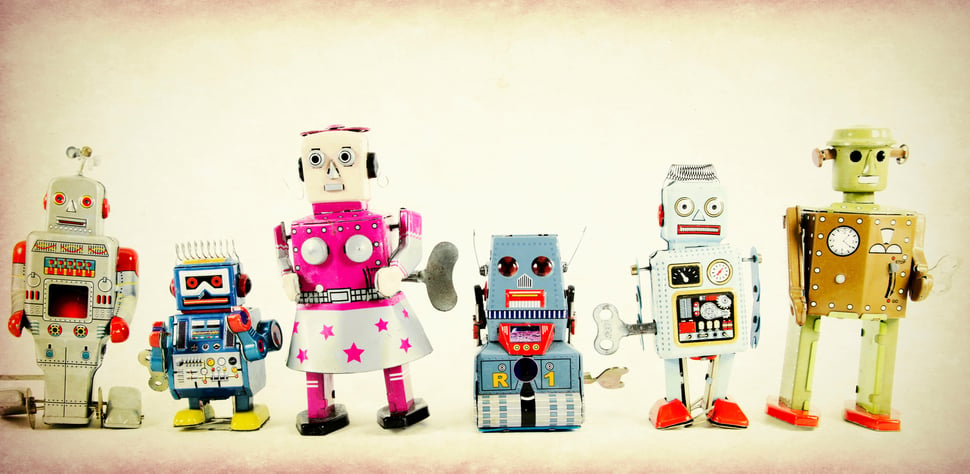Industry 5.0: The Convergence of Robots and Artisans

The Internet of Things and Industry 4.0 have stolen the stage lately where industrial revolutions are concerned. These technological advancements in industry are an inevitability and will touch everything from manufacturing and logistics to product design and marketing. Automation is central to this trend, including robotic applications and, as the Internet of Things promises, lights out manufacturing where humans are left to handle only the highly skilled jobs of programming the system at large, while machines are left to labor, day-in-day-out. While these technologies sweep across nations and redefine business models, there is another growing trend in the marketplace that is contrary to Industry 4.0, but not altogether separate.

There is an opportunity that exists where artisanal craftsmanship meets automation. In this pairing of seemingly separate spheres you’ll find that the finest handmade products can be produced on a massive scale and meet the demand of the one-button ordering markets of today. They call this creative collaboration Industry 5.0. There is no substitute, at least not yet, for human senses, and the feeling, thinking brain behind them, and yet there is similarly no way for humans to work with the precision and the unceasing drive of a robot. As a result, we are starting to find coworking robots in new environments beyond their usual factory floors, but in bakeries, coffee shops and even vegetable farms, working alongside craftsmen whose trade is authentic only through their unique human creativity.
Robot Welders
Manufacturers are beginning to accept that welders are a declining breed of tradesmen, especially those that are highly skilled and able to work in challenging and high volume facilities. Many robotics companies have answered this call by building efficient welding robots who can work around the clock with a precision and accuracy that humans simply can’t achieve. That said there is still a need for the skilled eye and hand of highly skilled welders, even where robots are employed, to teach the robots each task they are performing. With a system like Robotiq’s Kinetiq Teaching program, manufacturers can pair the skill of a tradesman with the brawn of a welding robot to increase their production times and accuracy to meet the market needs. These coworking robot systems can be trained by hand placements and through a simple interface to increase a company’s productivity to meet their marketplace demands as Rapid Line has.
Automating San Francisco’s Most Famous Bread Baking
Large baking facilities like General Mills have long used automation in their production to meet the demands of shipping thousands of different products around the world every day. Artisan bakeries, like Tartine in the heart of San Francisco’s Mission District, on the other hand, have yet to embrace automation as way to expand their business. Made famous by food writers and a number of cookbooks written by the owner himself, Chad Robertson, Tartine is in the middle of a huge international expansion that will indefinitely include the use of a certain level of automation that makes most people in the artisan baking world uncomfortable. Good bread, they say, is hand made, but Roberston doesn’t believe that automation kills the craft or that it labels him a sellout. In an interview with Munchies he said, “We’re trying to scale something super artisanal, but take full advantage of technology that’s applicable… You can source your grain from a regional economy, you can fresh-mill it, and you can bake 20,000 loaves using robots.” Robertson plans to automate things like loading bread into the 15 or more deck ovens in his new facility, and wherever else he can for this new venture both in San Francisco and a few other American cities, and even as far as Tokyo, all with the help of coworking robots.
Robot Vegetable Farming
A lettuce farm in Kyoto, Japan will open in 2017 and plans to produce 30,000 heads of lettuce – a day. Lettuce is an optimal vegetable to grow indoors as it has shallow roots and can be grown vertically. With the help of robots like Universal Robots’ collaborative industrial arms, everything from planting seeds and harvesting heads of lettuce, to packaging and palletizing products for shipping can be done without any human labor. Not only is this an exciting step in the world of farming, but it’s quite a feat technologically to be able to program robotic arms to do such delicate work.
Individually Brewed Cups of Coffee on the Go
We’ve all been to those fancy coffee shops where you pay upwards of $4 a cup and wait at least 5 minutes for a perfectly ground, dripped and tempered cup of coffee that will taste better than anything else you drink that week. What if this tedious task of brewing the perfect single cup of coffee over and over again, something most of us know nothing about, could also be automated? Well, now it is. The Clover coffee brewer was developed and then purchased by Starbucks who will now enter the artisan coffee game with an efficient way to make you a fancy cup of pour over coffee that has been planted, picked sorted and washed by small farms around the world. Found in select shops, be sure to try out one of the Starbucks Reserve coffees made with this nifty vacuum extraction automated brewer. It’s not a long shot to imagine a robot arm moving your afternoon pick-me-up from the brewer to your hand, like we saw beer served at Automatica!
Industry 5.0 will deliver coworking robots into all manner of artisan scenarios, proving that this technology is not only advancing quickly, but also that it is affordable for small and medium enterprises. Robotics are often written off as too expensive for anyone but giant automotive and technology companies. The reality is that if a San Francisco artisan baker can make this investment, it would seem that anyone looking to scale their business could do the same with a little bit of creative thinking.







Leave a comment